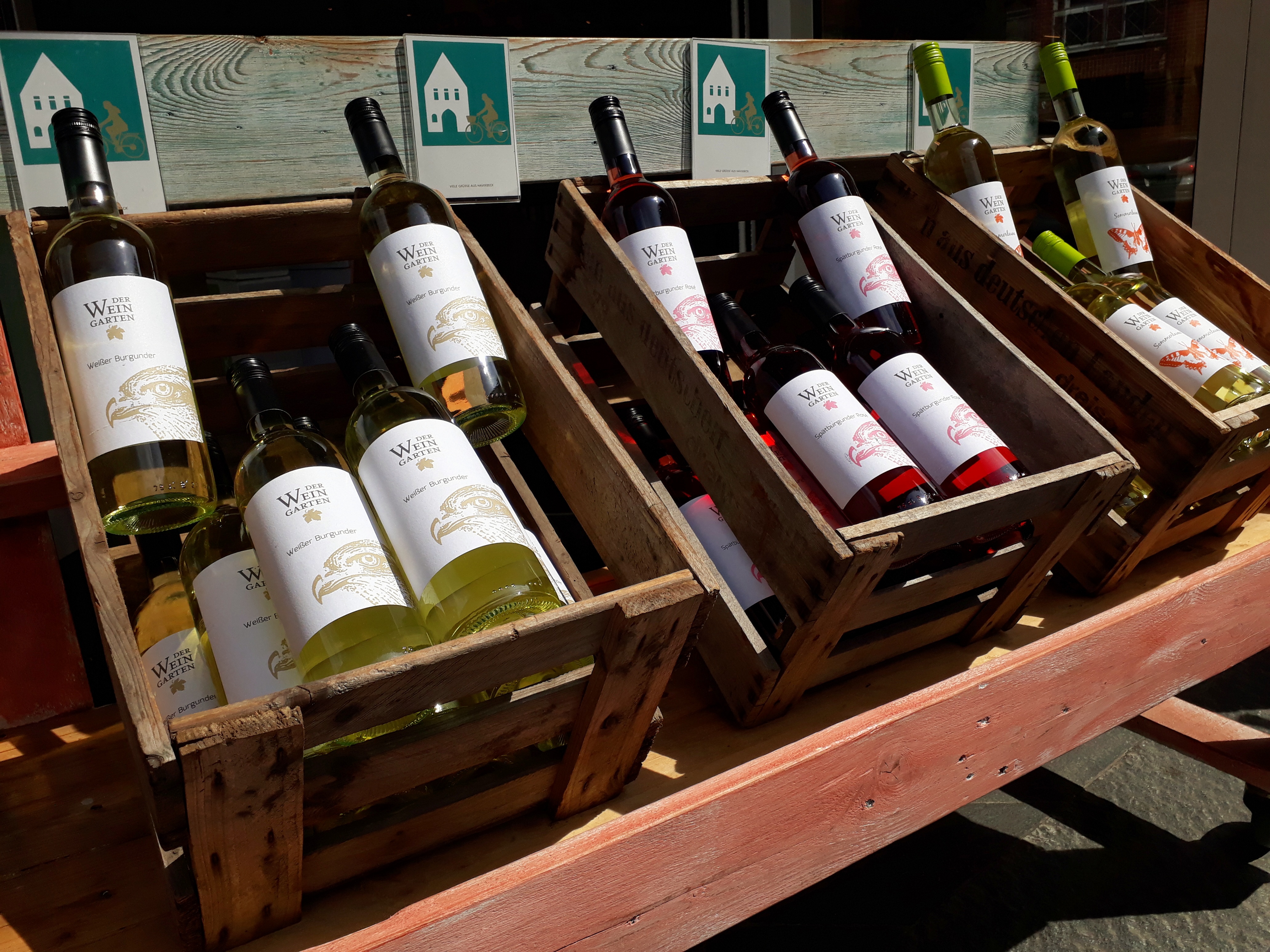It is autumn 2020 and Covid-19 is another time all around. Inside of the charming store of Der Weingarten owner and marketing professional are sitting together to talk about the future cooperation. Throughout 25 years Der Weingarten has become an institution in that small village. Known for its relaxed atmosphere and an unstressed handling of the product wine it has become a living example for taste in wine matters is not shaped by connoisseurs or mutual experts but only by customers.
Strategy and targets!? What for?
At the beginning there is the awareness: We use Facebook occasionally and we have a website. But there is not enough time for all of that. We need external support now and then to deal with it. But even before a discussion of single measures comes up, the marketing professional slows down. We need to get clear about strategy and targets first. What do we want to achieve? In general, and especially in communication, we need targets so both sides know, where the consulting journey leads to. By what strategy do we want to achieve that? At this early stage theory and practice collide. But after an associational glass of wine it becomes clear: Of course there are strategies and targets. They have seldomly become expressed though.
Together we work out, that competent guidance without attitude and a clear focus on the customers taste in a middle class segment is the everyday strategy. For a long time the aim is clearly to preserve the standing of the store as it was build up during the last decades. This will also shape communication.
Why communicate online if business happens offline?
Products and prices, also the location is already oriented on finding a matching wine for each customer. Target groups are wine lovers and givers who do not want to stroll without guidance through supermarkets or to trust in big (and expensive) names. No one will be judged because of asking for sweet wine. In the large portfolio of dry wines connoisseurs will constantly make new discoveries. Those who cannot articulate their taste become help in finding matching wines. This all shall now be brought up more presently by communicative measures.
As an online shop is not planned yet, it becomes evident that communication must aim at bringing customers to the store. However, we will use online communication.
The Facebook channel is well-established and addresses just the right target group.
The website offers everything necessary for successful communication.
The newsletter by now has a small reach but promises some potential. Further channels? We focus on strengthen the existing ones. With little budget and manageable effort we connect all that to a professional communication framework.
And when do we post?
Facebook becomes our main channel. To be able to sometimes tell more and to enable the website as a point of reference we place some content there and distribute it via Facebook and newsletter. Not always, not too often. Facebook does not like external links. To us they are sometimes more helpful than a picture with short text. The combination becomes our formula to success and offers some content by which we regularly can bring some life into the newsletter. We tell about
rosé suggestions for spring,
wine purchase under pandemic circumstances and
a winery family in Minervois.
We gain some exciting learnings. As Facebook is always working on its algorithms, comparable postings work out very differently. Often a picture with budget performs worse than a link shared in groups. Then again a picture without hashtags performs effectively even though all experts agree on using hashtags will be the only way to success. In the end we handle it as in store: We do what the customers like. Interesting articles on the website are connected to offers and views behind the scenes.
Is it worth the effort?
Let the results speak. We talk about 40% increase in followers within 9 month. Furthermore three times more reach. What in absolute numbers sounds a little less impressing: 350 followers in July 2021 and a reach per month of 800. However, we talk about a small retail business in a village with 12.000 inhabitants. And most of all it was not aimed at building huge reach, which we would have tried differently.
Our target was to increase sales at and to bring customers to the store. That was a success. It becomes more and more common to meet customers who ask for products which have been offered in our advertisement. “I have read about this interesting wine online and I want to try it”, is what people say more and more often.
How else can marketing help small businesses?
Communication built the entrance. Meanwhile, we also talk about different topics, as the portfolio for example. Of course, sales numbers are well-known and if one stands in store every day there is a feeling for successful products. On the other hand, by analyzing orders and sales arise better arguments for headlighting some products and eliminate others. Order volume can easier be planned by considering sales during timescales. And in portfolio planning it has proven to be helpful having a chat once in a while.
Der Weingarten has established during 25 years so many things have been made right for a long time. To be able to help professionalizing business even more makes me happy. And 100 followers in 9 month show that the plan worked out.
